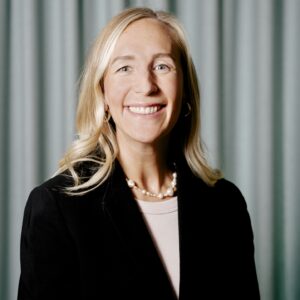Historically, the typical launch structure for a family office has been for the founder to hire his accountant, banker or former CFO to handle the funds in the event of the company being divested – in part or in full. From there, the family office has grown in line with the family’s development as owners, the addition of more (generations of) active owners and investment areas.
Family office service range expands over time
The next step in the development of the family office typically takes place as the family – or founder and their partner – get used to being owners of wealth. Tasks that they have always handled themselves so far – travel planning, insurance overview, maintenance of properties, housekeeping, etc. – are gradually being transferred to the family office, which will now require more than investment profiles. That can be a challenge in itself, as the following quote from Union Bank of Switzerland’s Family Office Report 2023 explains:
“How easy is it for your family to talk about inheritance and hopes and dreams? These things are so personal that it’s very difficult. A few years ago, we had discussions with the family where we tried to articulate values. The result was something that we struggled to embed into the family office. It’s very difficult, and especially so for the finance professionals who are used to dealing with less emotional topics.”
– quote from a family office CEO in London.
After the important development from investment company to family office, offering both wealth management and support for the family’s daily life,, the owners are ready for the next, typical step in the development of the family office – namely roles and involvement from the owners. Maybe you want to work actively with philanthropy, start your own business, engage in or invest in artistic activities or have hobbies that require management and resources from the family office. Over time, enough trust has been built up in the family office that the education and development of the next generation and the facilitation of family ownership, through family meetings, family holidays and joint training, are now also placed in the hands of the family office.
For decades, the method of starting with investment and then growing a family office that is proportional to the family’s needs has worked well. However, you can also use a different approach, where you try to anticipate and plan the structure according to the family’s wants, needs and ambitions from the start. In the following, we review four of the most common structures for family offices – virtual family office, embedded family office, multi-family office and single-family office.
Virtual family office
A virtual family office makes it possible to outsource all or part of the family office in a very cost-effective way. The employees in a virtual family office will not all be in one physical location, nor necessarily in the same time zone. The advisor team consists of individual specialists that you can call on as needed. This structure is less tailored, less personalised, highly fragmented and 100% transaction-based. Yet, it is an agile model, where you can bring experts into, or take experts out of, your virtual team of advisors as needed.
Embedded family office
An embedded family office is integrated into the family’s operating company or strategic asset, and the family office utilises the skills and capacity from this. These skills could be anything from the help of a CFO to involving a larger part of the employees in advising and servicing the family. There are clear advantages to expanding an already existing organisation, where the same employees can contribute to both the business and to the ownership. However, many families grow out of this type of family office because they need skills that are specialised within ownership and typically also the dedication of the employees, who, in an embedded family office must take different roles several times a day.
Multi-family office
A multi-family office offers wealth management and other services to a group of wealthy families. Multi-family offices typically have the greatest focus on investments and less focus on services tailored to the individual family. The employees are not necessarily employed by the family, but rather by another company that offers subscription and retainer solutions for families. This solution is therefore also more cost- and time-efficient for the individual family. However, a multi-family office may also have started as a single-family office and then and then brought more families on board because they had excess capacity or the desire and need to have more assets under management, allowing them to access more complex league of investment opportunities.
Single-family office
A single-family office is the most common type of structure. This structure follows the journey as described above, typically starting with a single trusted advisor in auditing, banking or investing and growing to have multiple competencies on board. In other words, a single-family office is one separate unit that services one family with both financial and private services, such as philanthropy, advising owners and next-gen development. The single-family office structure is the solution most tailored to the family’s needs, where the individual family members across multiple generations can also find their own roles and career opportunities in the family office.
When planning the structure of your family office, it is also important to consider strategy, meeting frequency and needs, and distribution of competences.
Read more about family office strategy here. You are also welcome to contact us for a non-binding meeting about establishing or optimising your family office.









